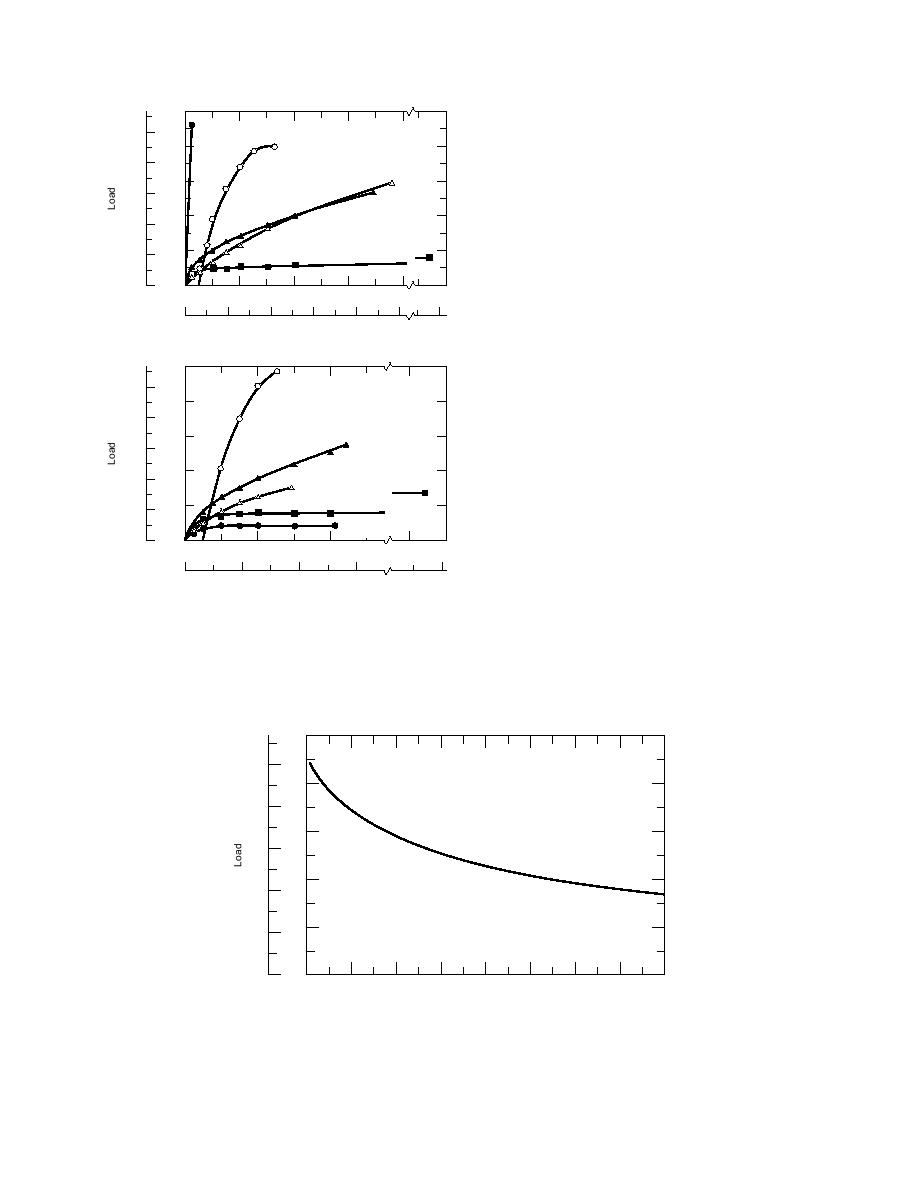
is not possible to extrapolate such results to
(kg)
(lb)
quantitatively predict general structural behav-
500
ior, i.e., the behavior of seals with different ge-
A Rubberized
200
ometries and structural configurations.
sphalt (12.5%)
400
Karpati's results illustrated in Figures 1113
Pol( urethane
y
160
Preformed
(
indicate the nominal loads and joint extensions
378%)
163%)
300
at failure of the butt joint seals. A comparison of
120
Polysulfide
(
the results with the schematic illustration in Fig-
345%)
200
80
ure 4 for material specimens demonstrates the
underlying influence of the strain rate and tem-
Silicone
(
100
766%)
40
perature dependence of the material on the butt
joint seal response. In general the failures take
0
0
0
1
2
3
4
8 (in.)
place at high joint expansions relative to the re-
quirements of a field joint. This is the desired
0
2
4
6
8
10
20 (cm)
behavior of a low modulus sealant; i.e., the flex-
Elongation
ibility of the seal causes stresses to remain be-
(kg)
(lb)
250
low failure levels for expected joint movements.
Other examples are the experiments by Col-
100
200
Preformed
(
lins et al. (1986), which demonstrate the effect
126%)
80
of temperature on the response of model seals.
150
Polysulfide
(
Results from the experiments are shown in Fig-
222%)
60
ure 14. The tests were constant rate of joint ex-
100
tension experiments using seal specimens with
40
Pol( urethane
y
dimensions of 2.5 2.5 12.7 cm. The extension
145%)
Silicone
(
918%)
50
20
rate was 1.2 cm/min, and the test temperatures
Rubberized Asphalt
(
were 7C (20F), 22C (72F) and 54C (130F).
207%)
0
0
Materials marketed as pavement sealants were
0
1
2
9 (in.)
used to form the model seals, and the material
0
2
4
6
24 (cm)
of the supporting bars was portland cement con-
Elongation
crete. The materials are indicated on the figure
together with the extension ratios at failure. Also
Figure 14. Results from constant rate of extension tests of
shown in the graphs are the responses of a pre-
butt joint seal specimens formed from various sealants, at
7C (20F) and 22C (72F). (From Collins et al. 1986.)
formed compression seal.
(kg)
(lb)
50
20
40
16
30
12
20
8
10
4
0
0
0
20
40
60
80
100
120
140
160
Time (min)
Figure 15. Cook's (1965a) results from step deformation tests of poly-
sulfide butt joint seal specimens.
16



 Previous Page
Previous Page
